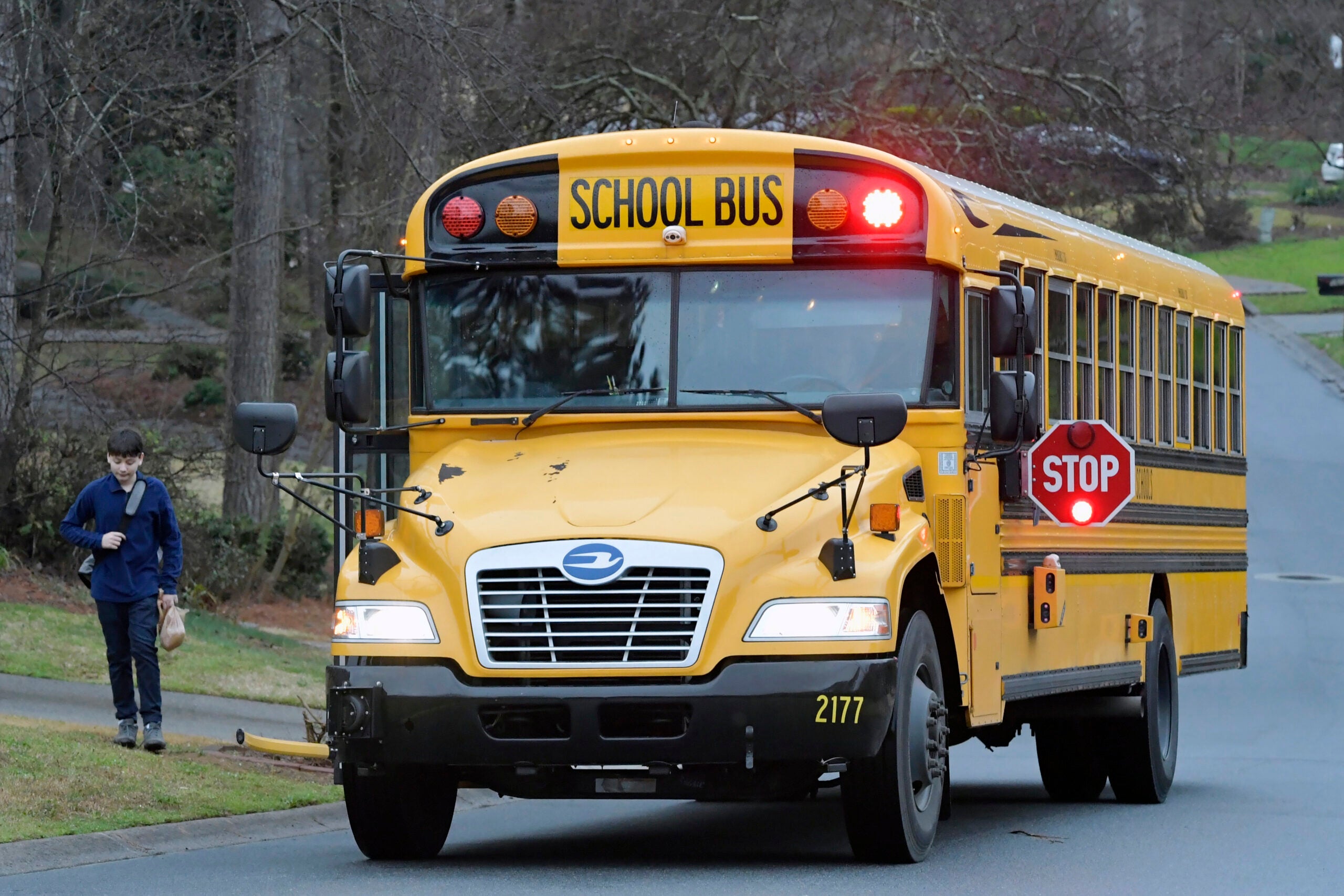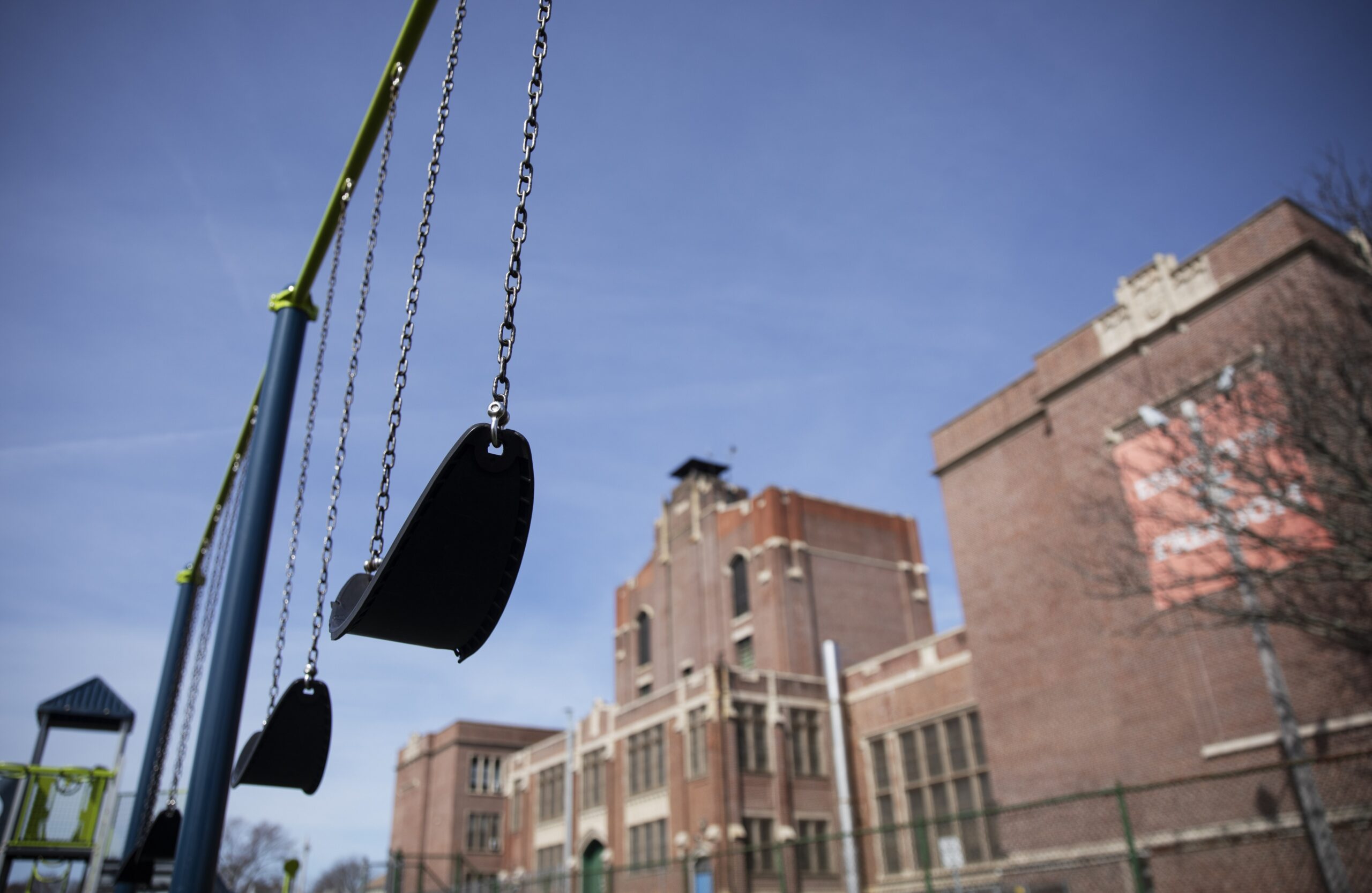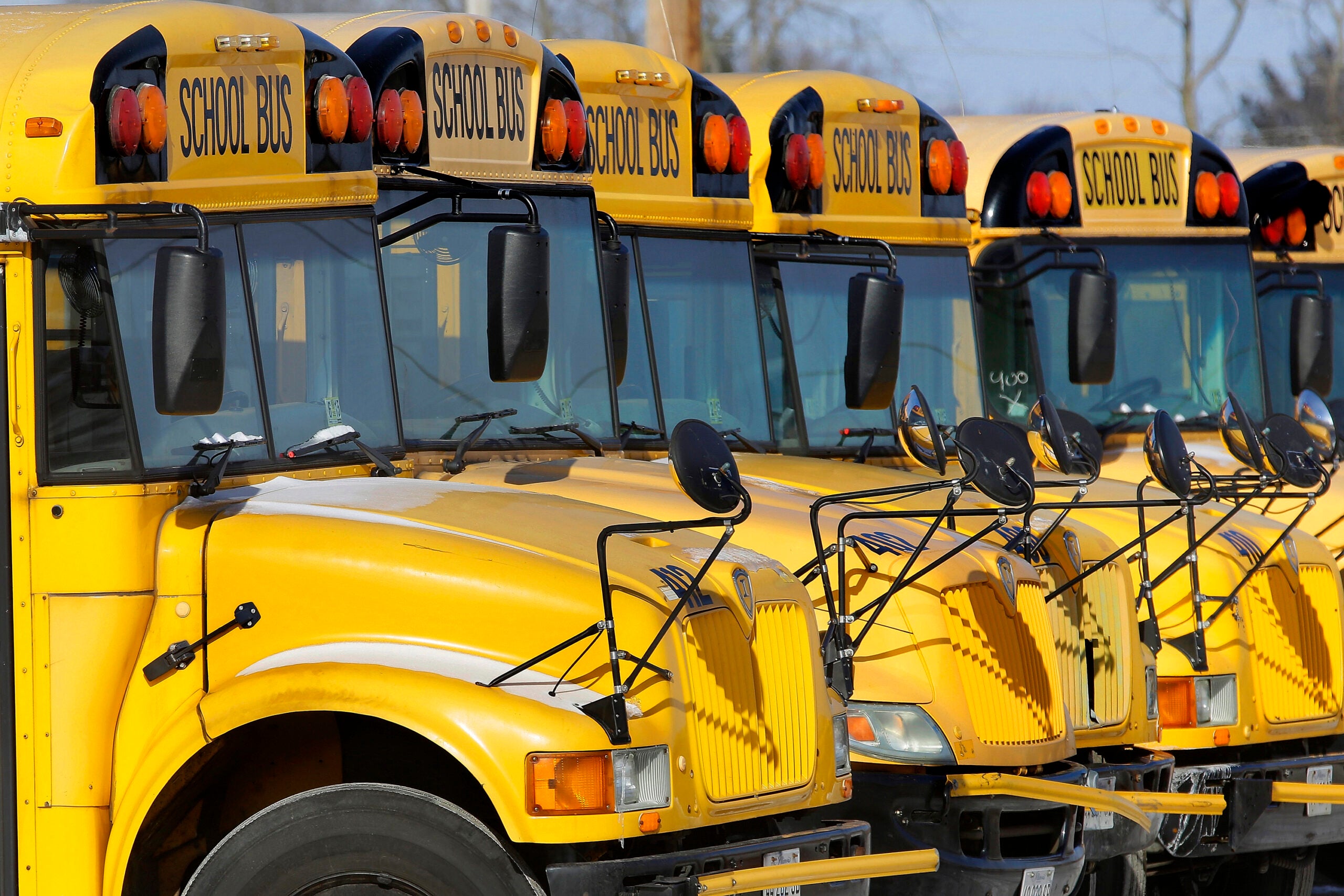When Tammy Henderson was young, her mother was able to drive a school bus with just a chauffeur’s certification.
Henderson, who’s now the transportation manager for the Stevens Point School District, notes that things have changed dramatically since then. The roughly 60 drivers required to fully staff Stevens Point’s bus routes need not only a commercial driver’s license, but also a special “school bus and passenger” endorsement — plus the rigorous drug and background checks necessary to be working with school kids.
When drivers turn 70, they need to be re-tested every two years to keep their certifications.
News with a little more humanity
WPR’s “Wisconsin Today” newsletter keeps you connected to the state you love without feeling overwhelmed. No paywall. No agenda. No corporate filter.
“Even people that are renewing their CDL that are current employees, they get really frustrated with it,” said Henderson. “A lot of them are just like, ‘You know what, I’m just going to retire.’”
That can put bus companies and districts in a tough spot. The regulatory precautions are necessary, said Wisconsin School Bus Association President Cherie Hime, but they can also be daunting for would-be drivers.
“Obviously, we’re transporting our most precious cargo, so we’re not going to let just anybody get behind the wheel,” she said. “You can’t get around the regulatory compliance stuff — you have to pass drug tests, you have to pass the road skills test, you have to have tight screenings.”
Those existing pressures on the workforce were exacerbated when they collided with COVID-19, which posed a particularly high risk to the largely older, retired population that most school bus contractors and districts pull from because they’re suited to the part-time, flexible hours.
“The driver shortage was escalated because of COVID-19, and we don’t see an end to it going into the 2021-22 school year,” Hime said. “This is a critical level shortage that’s affected across the country, and Wisconsin is no different.”
Last school year, before a COVID-19 vaccine was available, Steve Roekle was initially worried he’d lose many of his roughly 55 drivers over concerns about the coronavirus, since most were in that older, higher-risk population. In the end, he said, just about all the drivers at his company, Brandt Buses, stayed on for last year, and are returning for the coming school year — though, because of their age, he’s mindful that he can’t hang on to them forever.
“I don’t know if that generation will ever be replaced,” he said. “They love driving, they knew what had to be done, and they came to work every day and did it.”
Even with many drivers staying on, though, Roekle said it’s been hard to hire enough drivers. He said some vaccinated retirees that they might ordinarily be able to recruit are still hesitant to return to the workforce in light of COVID-19 concerns. The company, which contracts with the Manitowoc school district, used to be able to hire shift workers at other companies to pick up a route before or after their shift. But with worker shortages across the state, many of those employees are working overtime, and can’t fit in a bus route.
“With the tightening of the marketplace, some of the areas where we got drivers have kind of dried up,” he said.
Henderson, in Stevens Point, said she needs about five more drivers to be fully staffed, after some retired and others took different jobs.
“With a lot of companies paying a lot more money nowadays to get employees with the bonuses or the hourly wage, they have more steady work and maybe more benefits (elsewhere), and they don’t have to do the testing,” she said.
Hime, whose organization represents about 64 contractors and 85 districts, said she’s seen bus companies respond by also offering signing or referral bonuses to recruit more drivers, or by raising wages.
Henderson said that’s not an option in Stevens Point. The district has more limited financial flexibility than private contractors, so while drivers’ roughly $20 hourly wage is competitive, the district can’t offer bonuses like some contractors. Additionally, she said, drivers at her previous employer — the contractor Lamers — were eligible for unemployment benefits during the summer, while district drivers aren’t.
If Henderson can’t get her five more drivers, she said she’ll have to put the relief drivers who usually act as substitutes for drivers who call in sick on regular routes. Then, if a driver does call in sick, the district will have to consolidate several routes — which can make the trip a lot longer for students.
She said she got a preview of what that will look like over the summer, when Stevens Point got calls from worried parents after it didn’t have enough drivers to fully staff its summer school routes.
“Some of our routes were running over two hours long,” she said. “Our phones were lit up, and there was nothing we could do, we didn’t have enough drivers.”
Wisconsin Public Radio, © Copyright 2025, Board of Regents of the University of Wisconsin System and Wisconsin Educational Communications Board.






